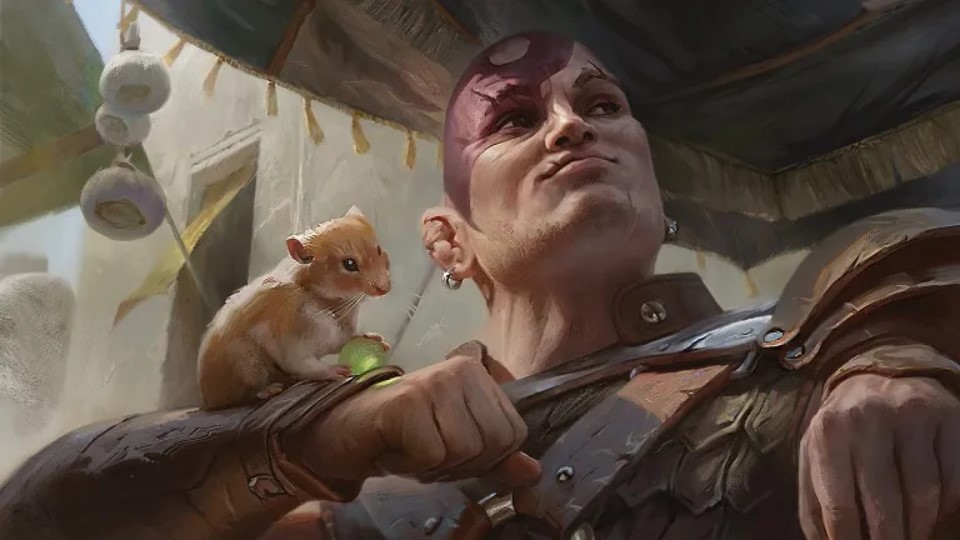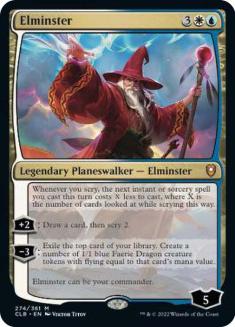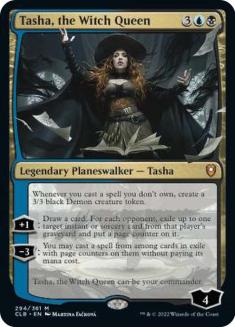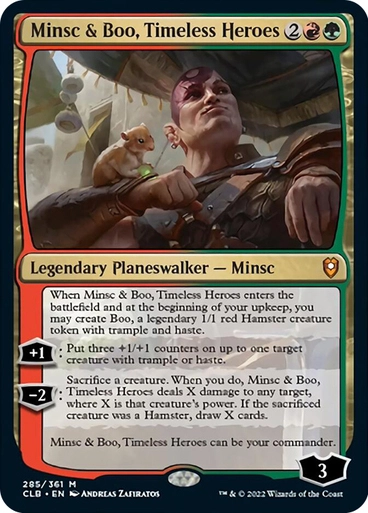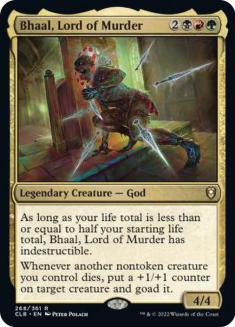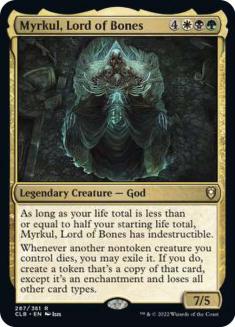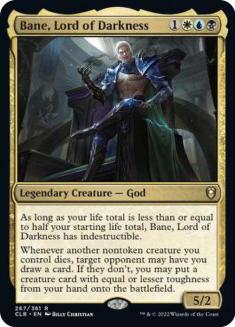Ah, adventurers! Welcome to the Blushing Mermaid Tavern! I was worried I had lost you among the winding streets of Baldur’s Gate; yet here you stand, no worse for wear. I knew you were made of sterner stuff. Please pull up a chair and warm yourself by the fire.
Perhaps we should begin with a story about some of the most powerful characters to walk the face of the Forgotten Realms. While the chances of you running into any of these powerful beings during your stay in Baldur’s Gate are as slim as a snowball’s chance in Avernus, the effect they have had on the city and on the world in general is profound, and in many cases they still shape the world around us to this day. Some of these characters were once powerful gods; others, mere mortals with godlike powers who travel between realms. Should you meet them, proceed with caution, as even the patience of kindly wizards of awesome power has its limits!
With that, let’s take a look at a few of the new legendary creatures (and planeswalkers!) featured in Commander Legends: Battle for Baldur’s Gate!
Warning: This article contains minor spoilers for every Baldur’s Gate game, Baldur’s Gate: Descent into Avernus, and The Wild Beyond the Witchlight. Ye be warned!
Planeswalkers
Elminster
One could fill tomes upon tomes with the adventures and exploits of Elminster of Shadowdale, as he is known in the lands of Faerûn. One of the most powerful wizards in all the land and an acquaintance to Mordenkainen, Elminster’s accomplishments are legendary.
Blessed with immortality by the goddess of magic herself, Mystra, Elminster is over 1,000 years old by Dalereckoning! In his time, he has seen the rise and fall of many heroes and kingdoms. He has also saved the world more than once from threats within and beyond the Forgotten Realms, survived the Spellplague, and visited other realms–including the Nine Hells and even Earth, where he often meets with his friend Mordenkainen and his good friend Ed Greenwood (creator of the Forgotten Realms).
So how do you boil down such an iconic and powerful hero into just a single card? Well, the sad truth is–for Elminster at least–you don’t. And I don’t fault the designers for this at all. A character who has nearly godlike powers, Elminster has traveled between many realms, so being a planeswalker makes sense. He is also crafty, clever, and good-natured, which fits perfectly with blue and white. He can also be your commander, and Elminster has led many a battle for the fate of the Forgotten Realms.
I like what they were going for with scrying and spells matter, as Elminster is renowned for his wisdom and counsel, but his second ability confuses me. I can’t recall or find a reference to him having any affinity towards Faerie Dragons, so this feels tacked on.
Grade: C
Tasha, the Witch Queen
“My mother once said, ‘Natasha my pumpkin, do you want to be a witch or a queen?’ I answered, ‘Both, Mother. And it’s Tasha.'”
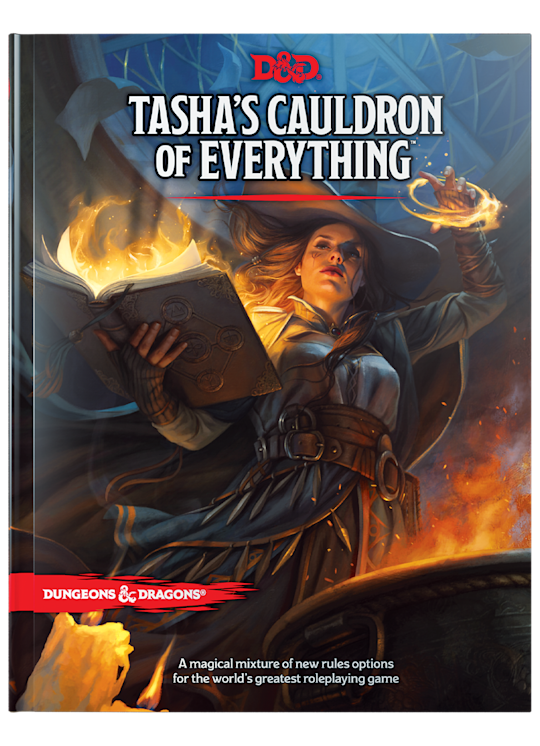
Tasha (also known as Natasha, Iggwilv, and Zybilna) is one of the most powerful archmages in the D&D multiverse, and also a renowned demonologist. Tasha is also credited with creating the famous spell, Tasha’s Hideous Laughter. Originally human, Tasha was the adopted daughter of Baba Yaga, the “mother of all witches.” With the help of her adoptive mother, Tasha crafted a powerful cauldron that allowed her to freeze time for everyone nearby.
Eventually, Tasha ventured into the Abyss, where she studied demons in an attempt to gather more power and arcane knowledge. It was here that she would encounter her sometimes lover, sometimes enemy, and peer–the demon lord Graz’zt. To call their relationship “complicated” is an understatement, as the two have betrayed and saved each other countless times throughout the years. Her association with demons created powerful enemies, which forced her to keep a small cadre of demons everywhere she called home (even in the mortal realm).
Eventually, she would relocate to Prismeer, a domain of delight located in the Feywild where she would rule as an Archfey. Sometime later, Tasha would be betrayed by some of her adoptive sisters, Bavlorna Blightstraw, Skabatha Nightshade, and Endelyn Moongrave, who formed the Hourglass Coven. Using the power of Tasha’s Cauldron, they would freeze Tasha, trapping her until she was freed by a group of adventurers. Tasha was also an accomplished author who penned a variety of books, including the Demonomicon and Tasha’s Cauldron of Everything.
Much like Elminster, it is hard to take such an iconic character and distill them down into a single card without having an absurd amount of rules text or just plain missing the mark. I think that both arts for Tasha, the Witch Queen are fantastic interpretations of the character. In each she appears to be using a spell book, presumably the aforementioned Demonomicon, to cast something vile, causing fell spirits to swirl about her.
Her static ability creates a 3/3 demon whenever you cast a spell that you do not own. Her first ability sets you up for creating your own spellbook using other players’ cards as spellbook pages, suggesting the forbidden knowledge of the Demonomicon. The third ability triggers the static ability and allows you to cast spells from your spellbook without paying the mana cost, and summons a demon. All in all, this card feels pretty flavorful and is fairly faithful to the character.
Grade: B
Minsc & Boo, Timeless Heroes
Go for the eyes, Boo! Minsc and his loveable companion are back, this time as a planeswalker. I talked a little about the history of Minsc and Boo in a previous article I wrote for Adventures in the Forgotten Realms, and it seems that Wizards of the Coast (WotC) is taking full advantage of the popularity of Minsc and his loveable miniature giant space hamster, Boo.
When we first see Minsc in the first Baldur’s Gate game, he is acting as a bodyguard for the mage Dynaheir as part of a rite of passage among Minsc’s people known as a dejemma where Minsc seeks honor and glory in battle. He travels along with the player character throughout the original Baldur’s Gate and Baldur’s Gate 2 as a companion and is widely lauded as the one of the best companions in the game, and possibly the most entertaining.
After his exploits saving the world twice, a statue was commissioned of Minsc and Boo who were now legends. Unbeknownst to the populace, this statue was actually the heroes, turned to stone! Many years passed until a wild magic surge caused by Delina, Wild Mage lifted the petrification curse and Minsc and Boo were free once more.
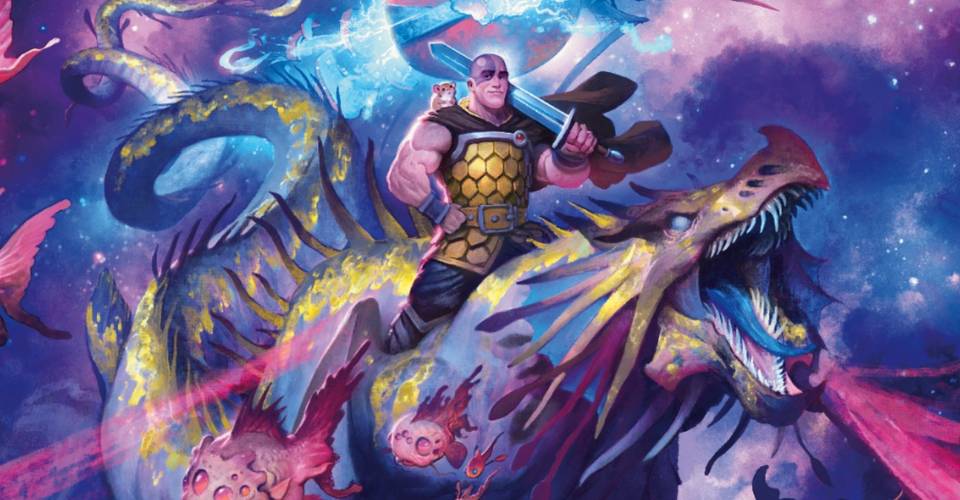
After their brief stint here in Baldur’s Gate, it seems that the only place left for Minsc and Boo to go is space! I hope to see more of this loveable duo in Spelljammer, which releases in August 2022 and features Minsc and Boo prominently on the cover of Boo’s Astral Menagerie.
I must say that I really like what they have done with Minsc and Boo, especially making them planeswalkers who can act as your commander. Clearly a lot of thought went into the design of this card to make it both flavorful and strong.
Minsc is never far from his companion Boo, with his static ability bringing the companion back again and again. The first ability suitably buffs Boo, allowing him to ready his attack, whereas the second ability sacrifices a creature to deal damage and allows the controller to draw cards. While it is sad to sacrifice Boo, we know that he will be back shortly. I interpret this as Minsc throwing his hamster at the enemy and shouting his signature catchphrase: “Go for the eyes, Boo!”
Grade: A+
The Dead Three
The Dead Three (or the Lords of Darkness) were once mortal men who craved power above all else. The group, consisting of Bane, Myrkul, and Bhaal, sought godhood, and together they formed a pact to achieve it. Ultimately they were successful, but were each defeated during the Time of Troubles, when gods were forced to walk amongst their people and many were destroyed.
It seems that each of The Dead Three have returned as quasi-deities, prepared to threaten the people of the Forgotten Realms once again. Incidentally, I think they did a great job representing their new nature with the rules text: “As long as your life total is less than or equal to your starting life total, [name] has indestructible.”
Bhaal, Lord of Murder
Bhaal has a long history tied to Baldur’s Gate and the Forgotten Realms. As the patron god of ritualistic murder and violence, Bhaal was widely and rightly feared. His symbology is that of a skeletal face surrounded by droplets of blood, which we can see depicted in the art if you look closely. He is best-known for being the sire of the player characters and various other Bhaal spawn throughout the Baldur’s Gate franchise. With the death of his last progeny, Abdel Adrian, the Lord of Murder returned. Some blame Bhaal’s influence for the violence and crime that now runs rampant throughout the city of Baldur’s gate.
So how does the card measure up to the Lord of Murder? Making the card Jund is an interesting choice. Black and red are understandable, but green is odd. After one of your creatures is murdered, Bhaal’s ability goads your opponents into murdering more, therefore continuing the cycle of murder.
I suppose the machinations of Bhaal take time to set up instead of killing creatures as soon as he shows up on the battlefield. Something like Massacre Girl’s effect. Otherwise, it feels like he is missing something…needs more murder, perhaps?
Grade: B
Myrkul, Lord of Bones
One of the gods of death in the Forgotten Realms, eventually replaced by the god Kelemvor, the current Lord of the Dead. Myrkul was depicted as a skeletal man hidden beneath flowing black robes and a darkened cowl. One of Myrkul’s most notable powers is the ability to summon and bind the soul of any slain creature within a skull made of wax; however, he can only use this ability if he is able to grind up a piece of the creature (usually its bone), which is then mixed with the wax when casting the aforementioned skull. By binding the soul of the creature within the wax, Myrkul can force the soul to divulge its secrets and knowledge.
So how does the card Myrkul, Lord of Bones measure up? I really like his ability to reanimate creatures into enchantments, which is a good interpretation of Myrkul’s mastery over souls. It is as if Myrkul is drawing the souls from your graveyard to do his eternal bidding. Very flavorful and very powerful.
Grade: A
Bane, Lord of Darkness
Not to be confused with the notorious Batman villain, who also has a penchant for darkness. [The Forgotten Realms deity also predates the first appearance of the comic book supervillain by nearly five years.] Bane, also known as the Black Hand, is the tyrannical god of oppression, terror, and hatred. The consummate despot, Bane seeks to rule over all of the Forgotten Realms through his agents, worshipers, and intermediaries. He rewards those who would seize power by any means and presses the weak into servitude.
Bane’s most prominent feature is his distinctive jet black hand, which is usually gauntleted. He is often depicted as a well-dressed noble or as an armored military leader. Bane is able to overpower any who show weakness before him, browbeating them into compliance or simply crushing them with his divine power. While utterly tyrannical, Bane can act as a very charismatic temptor. Bane knows that a thirst for power resides within every mortal–a fact he leverages to his advantage. With honeyed words and promises of power, Bane can manipulate even the most stalwart into compliance. It is often not until the black gauntlet closes around them that they realize they are under the thrall of Bane, and by then it is too late.
So how does Bane, Lord of Darkness measure up? I won’t lie; when I first saw Bhaal and later Myrkul previewed on Weekly MTG, I guessed correctly that Bane would be an Esper commander. However, I guessed incorrectly that he would have some kind of oppressive effect like, “Choose any number of target players. They can no longer have any fun for the rest of the game.”
I was rather surprised with the ability Bane has, but remembered that Bane often works through intermediaries and offers the illusion of choice in his role as a master of manipulation. I still would have liked to see him have a much more oppressive effect, but in his role as Lord of Darkness offering players the “choice” of either card advantage or powerful recursion, this card is pretty flavorful.
Grade: B
More Adventure Awaits
That is all for now, adventurers. You will learn more in the coming days, of legendary creatures and Backgrounds, and beyond. For now, it is time to rest.
I hope you enjoyed this article. If you are a Dungeons & Dragons fan like me and want to read more of my musings about dungeons, dragons, and Game Master advice, check out my blog.
CommandFest Richmond
On the weekend of June 3-5, thousands of Magic: The Gathering fans will converge upon the Greater Richmond Convention Center to celebrate their favorite 100-card format at CommandFest Richmond! Experience Commander Legends: Battle for Baldur’s Gate for the first time and meet dozens of fan-favorite Commander personalities and special guests. Register now for the can’t-miss Magic: The Gathering event of the year!

